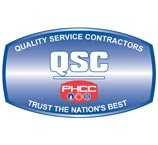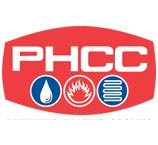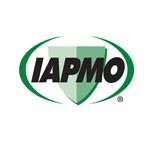Clogged Toilet Chaos? How Santa Cruz Residents Can Handle Toilet Clogs Like a Pro
Few household inconveniences rival the annoyance of a clogged toilet. It’s a problem that always seems to happen at the worst possible time, and it can quickly escalate into a messy and expensive disaster if not addressed properly.
Google Consumer Surveys have found that 20% of American homeowners experience clogged toilets on a normal basis. Considering that the average toilet flushes about five times a day, there are plenty of opportunities for it to get backed up.
But before you reach for the phone to call a plumber, there are some simple and effective methods you can try to unclog your toilet bowl yourself. In this guide, we’ll go over some of these DIY methods and give you tips on how to prevent clogging in the first place. Let’s jump right in:
Different Types of Toilet Clogs
Toilet clogs can come in many different forms — At Duncan Plumbing, we’ve seen just about every type of toilet clog available. Having a basic understanding of these can help you determine the best way to fix them – and prevent future issues. Here are the most common types of toilet clogs:
Organic Waste Clogs
These are the most common type of clogs, caused by the accumulation of natural waste and toilet paper. These clogs usually occur right in the toilet’s trap or further down the sewage line and can often be resolved with a plunger or a toilet auger.
These clogs are especially common when more people than usual are using the toilet. For example, Yelp has shown a 99% increase in “request a quote” service for plumbing bookings the day after Thanksgiving, when many households are hosting parties or guests.
Foreign Objects
According to Angi, the most common problem with most toilets is a clogged drain caused by flushing the wrong items.
Items that should not be flushed down the toilet, such as children’s toys, feminine hygiene products, cotton swabs, and even excessive amounts of toilet paper, can lead to significant blockages. These require more careful removal, sometimes necessitating the dismantling of the toilet.
Additionally, non-flushable materials can cause unexpected environmental damage, polluting local water sources and clogging up pipes with substances that cannot naturally be degraded.
Low-Flow Toilet Clogs
Older low-flow toilets are particularly prone to clogs due to their lower water pressure and flushing power, which are not always sufficient to clear the drain and pipes. Improving flush efficiency or occasionally using enzyme-based cleaners can help manage these issues.
Hard Water Deposits
In areas with hard water, mineral deposits can build up over time in the pipes and reduce the diameter through which waste can pass. These are more challenging clogs to clear and might require chemical solutions or professional help to remove the mineral build-up. Fortunately, Santa Cruz is pretty moderate with hard water – and this is not a common issue locally.
Vent Pipe Blockages
Sometimes, the problem isn’t in your toilet or pipes but in the vent pipe, which helps regulate air pressure to flush water efficiently. If this vent is blocked by debris, leaves, or nests, it can affect the toilet’s flushing ability, leading to recurrent clogs.
Vent pipe blockages tend to get overlooked because the vent is not visible – like other parts of your plumbing system. It’s located on the roof, which makes it susceptible to blockages from external elements such as branches, dirt, and even small animals seeking shelter. Regular maintenance, including a visual inspection and clearing of the vent opening, can prevent these types of blockages and ensure optimal toilet function.
DIY Steps to Unclog Your Toilet
Step 1: Plunge the Toilet
The first and most obvious method to unclog a toilet is to try using a plunger. This trusty tool has been around for centuries and remains the go-to solution for unclogging toilets. Before you begin, make sure to have some old towels or rags handy to catch any potential spills.
To plunge the toilet:
- Insert the rubber end of the plunger into the bowl and push down gently but firmly.
- Pull up quickly, creating suction that should dislodge whatever is causing the clog.
- Repeat this motion several times until you see the water draining out of the toilet bowl.
If a toilet plunger doesn’t work, don’t panic. There are still other options you can try before calling a plumber for your clogged toilet.
Step 2: Use a Plumbing Snake
If the plunger doesn’t do the job, a plumbing snake might be able to unclog your toilet. This long and flexible tool is designed to navigate through pipes and break up or remove any blockages.
To use a plumbing snake:
- Insert one end into the toilet bowl and carefully push it down until you reach the obstruction.
- Twist and turn the handle of the snake to break up or grab onto the clog.
- Once you feel like the obstruction has been removed, pull out the snake and flush the toilet.
If you choose to use a plumbing snake, be careful not to push too hard or use excessive force, as this could further force stubborn clogs or damage your plumbing system.
When dealing with an especially severe clog, it may be best to pay a professional plumber a couple hundred dollars to snake the drain.
Step 3: Use a Drain Cleaner
If the first two methods don’t work, you can try using a chemical toilet drain cleaner. There are many different types available on the market, so make sure to read the instructions and warnings carefully before using one.
To use a drain cleaner, pour it into the toilet bowl and let it sit according to the product’s instructions. This will allow the chemical reaction to break down or dissolve the clog. Then, flush the toilet and see if the water drains out normally.
Be cautious when using drain cleaners, as they can harm your health and damage your plumbing if not used correctly.
Step 4: Try a Natural Solution
Another option to try before calling a professional is using a natural solution to unclog your toilet. Here are two simple methods you can try:
- Baking Soda and Vinegar
Start by pouring one cup of baking soda into the toilet bowl, followed by two cups of vinegar and a half gallon of hot water. Let the mixture sit overnight, then flush the toilet.
- Hot Water and Dish Soap
Pour a pot of hot water into the toilet bowl, followed by a half cup of dish soap. Let it sit for a few minutes, then flush the toilet. Be careful not to use too much soap, as this could create excessive suds and make the clog worse.
These natural solutions may not work as quickly or effectively as other methods, but they are safer and more environmentally friendly options.
Step 5: Call a Professional Plumber
If none of the above methods work, it may be time to call a professional plumber. They have specialized tools and equipment that can help unclog a toilet without causing any damage to your pipes.
Additionally, if you experience frequent clogs in your toilet, it could be a sign of a larger issue in your plumbing system. A plumber will be able to diagnose and fix any underlying problems that may be causing the clogs.
Tips for Preventing Future Toilet Clogs
To avoid dealing with a clogged toilet in the future, here are some simple tips you can follow:
- Don’t flush anything other than toilet paper down the toilet. Items like wipes, feminine hygiene products, and paper towels can easily cause clogs. Instead, dispose of them in a trash can.
- Avoid using excessive amounts of toilet paper. While toilet paper is designed to break down in water, the average American uses about 57 sheets daily – and that can overwhelm a toilet, especially if it’s older. Use only what is necessary and flush multiple times if needed.
- Regularly clean your toilet. Keeping your toilet clean not only helps prevent odors but can also help prevent build-up that can lead to clogs. Use a toilet brush and cleaner regularly to keep your toilet in good working condition.
- Schedule regular plumbing maintenance. Having a professional plumber inspect and maintain your plumbing system on a regular basis can catch any potential issues before they turn into major problems.
The Wrap Up
Dealing with a clogged toilet can be frustrating, but by following these steps and tips, you can quickly and effectively unclog your toilet. Remember to always use caution when trying any DIY methods and call a professional if the clog persists.
At Duncan Plumbing, we understand the importance of a properly functioning toilet and are here to help with any plumbing issues you may encounter. Our team of experienced plumbers is equipped with the knowledge and tools to handle any clog, big or small.
Contact us today for all of your plumbing needs!
Updated: August 28, 2024






